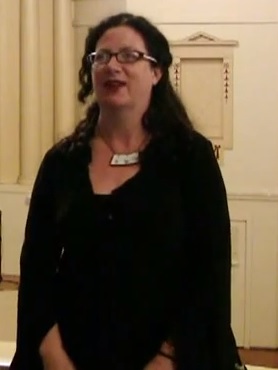Alice Gorman facts for kids
Alice Gorman is an Australian archaeologist, born in 1964. She is famous for her amazing work in a new field called space archaeology. She also writes a popular blog called "Space Age Archaeology."
Dr. Gorman works at Flinders University in Australia. While she knows a lot about ancient Indigenous stone tools, she is best known for studying things left behind from space exploration. This includes old satellites orbiting Earth, rocket launch sites, and places where people used to track satellites.
She teaches about modern objects, how to manage important cultural places, and Australian stone tools. Dr. Gorman is also a key member of a group called the Archaeology, Science and Heritage Council of For All Moonkind, Inc.. This group works to protect human heritage in outer space.
Contents
What is Archaeology?
Archaeology is the study of human history and prehistory through digging up and analyzing things people left behind. These things are called artifacts. Archaeologists learn about past cultures by studying tools, buildings, and even trash.
Early Archaeology Work
Alice Gorman finished her first degree at The University of Melbourne in 1986. After that, she worked as an archaeologist helping to manage important Indigenous heritage sites.
She went back to school in the late 1990s and earned her Ph.D. from The University of New England in 2001. Her special research looked at how archaeologists can find tools used for body decoration by studying tiny marks and leftover bits on them.
After getting her Ph.D., she kept working as a heritage consultant. In 2005, she started a permanent teaching job at Flinders University. She still helps with Indigenous heritage projects today.
Exploring Space Archaeology
From a young age, Alice Gorman loved both space and archaeology. Even though she chose archaeology as her career, she found a way to combine her two passions! She started focusing her research on the archaeology of space exploration. This new field is simply called space archaeology. (It's different from using satellites to find old sites on Earth, which is called remote sensing.)
In 2003, she was part of the very first meeting about space archaeology at a big archaeology conference. This was a huge step for the new field.
Discoveries in Space Archaeology
Since the mid-2000s, Dr. Gorman has written many articles about space archaeology. She is known for being one of the first to think of space as a "cultural landscape." This means she sees space, with all its human-made objects, as a place that tells a story about us. She also figured out how to decide if "space junk" is important culturally.
She has studied the "Space Race" from the Cold War, when countries competed to explore space. She also looks at how Indigenous people have contributed to space exploration around the world.
Dr. Gorman's space archaeology research includes many interesting places and objects:
- Vanguard 1: This is the oldest satellite still orbiting Earth.
- Woomera in Australia and Kourou in French Guiana: These are places where rockets were launched.
- Orroral Valley NASA Tracking Station: This was a station used to track spacecraft.
In 2013, her work on space archaeology was recognized when she was invited to give a talk at TEDx Sydney.
Sharing Her Knowledge
Dr. Gorman is also a teacher at the International Space University. She helps decide which research projects get funding from the Australian Research Council. She is a member of many groups focused on space and archaeology, including the Space Industry Association of Australia.
She often writes for The Conversation, where she explains her space archaeology research to everyone. Her writing has been featured in important science writing collections.
In 2019, Dr. Gorman published her first book about space archaeology. It's called "Dr Space Junk vs The Universe: Archaeology and the future." She was even interviewed about it on a popular radio show. In December 2019, her book won the John Mulvaney Book Award from the Australian Archaeological Association. This award celebrates important books about Australian archaeology.
Awards and Recognition
Alice Gorman has received many awards for her important work:
- In 2016, she became a Fellow of the Society of Antiquaries of London.
- In 2017, she won the Bragg UNSW Press Prize for Science Writing for her essay "Trace fossils: The silence of Ediacara, the shadow of uranium."
- In 2020, she received a Distinguished Alumni Award from the University of New England.
- In 2021, a special group of astronomers named an asteroid after her! The asteroid, called 551014 Gorman, is about 2 kilometers wide and orbits between Mars and Jupiter.
- In 2022, she was featured in a TV program called "The Unidentified: Are we alone in the universe?"
- In 2023, she was elected a Fellow of the Australian Academy of the Humanities.
See also
 In Spanish: Alice Gorman para niños
In Spanish: Alice Gorman para niños


